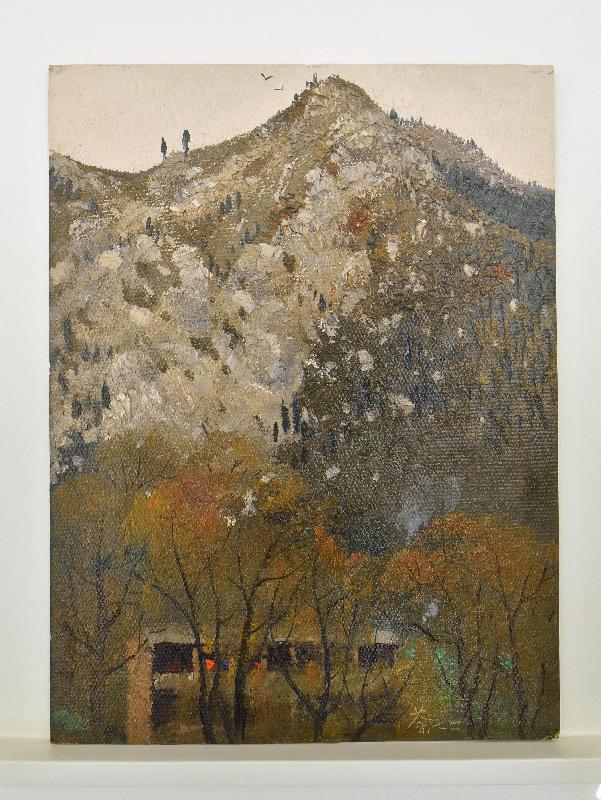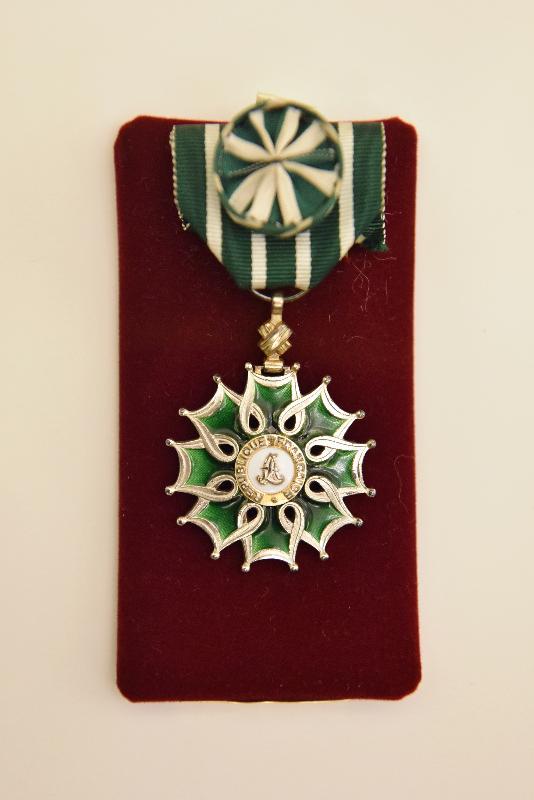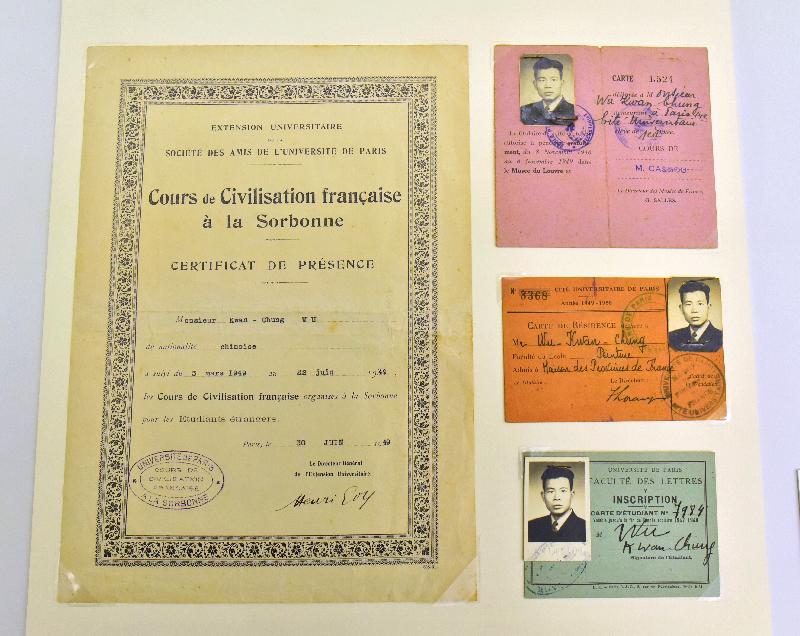The Hong Kong Museum of Art announced today (August 22) that the family of celebrated artist Wu Guanzhong has generously made another round of donations of Wu's invaluable works to the museum for its permanent collection.
The donated works include the painting "A household at the foot of mountain", which was created when Wu was sent to the countryside to do hard labour in the 1970s and was painted on cardboard placed on top of a dung basket, as well as sketches for several masterpieces such as "A riverside village of Ningbo" (the sketch for "Two swallows"), "The original draft of Chinese cypresses" and "A river alley of Suzhou". Together with the existing Wu Guanzhong collection of oil paintings and ink paintings that the museum holds, these works showcase the epitome of Wu's artistic creation. In addition to paintings and sketches, the donation also includes items that chronicle Wu's journey of artistic pursuit, including his work seals, documents he used and a certificate received in France as well as a ribboned gilt medallion awarded by the French Government.
Thanks to the generous donations from Wu and his family over the years, the Hong Kong Museum of Art now boasts the biggest and most diverse collection of works by Wu in the world, making up a huge collection of over 450 items. These comprise oil paintings, ink paintings, sketches, watercolours, gouache paintings, acrylic paintings and a porcelain painting made by the great artist over more than half a century. The museum is also one of the key international centres for modern Chinese painting collection and research. To present this celebrated collection with due esteem and to share such kind and gracious donations with the public, a permanent Wu Guanzhong Art Gallery will be set up, showcasing the master's donated works and related collection when the museum reopens in the second half of 2019. A series of activities will also be organised to commemorate the centenary of Wu's birth.
The Chief Executive, Mrs Carrie Lam, attended the Donation Ceremony for the Works of Wu Guanzhong today at Government House and presented a Certificate of Appreciation to the eldest son of Wu Guanzhong, Mr Wu Keyu, who received the certificate on behalf of his family.
The Hong Kong Museum of Art has received two remarkable donations from Chih Lo Lou Art Promotion (Non-profit making) Ltd and the Wu Guanzhong collection within the span of a month. The donations reflect Hong Kong's status as the international centre for preservation and conservation of Chinese cultural treasures with its unique positioning as a mix of East and West. At the same time, the donations again attest to the recognition of the professionalism and passion of the Hong Kong Museum of Art within the community of collectors and artists for its conservation of art treasures and promotion of art.
Wu Guanzhong (1919-2010) was a master in Chinese art with a comprehensive knowledge of art of both the East and the West. Dedicating his entire life to the exploration of the modernisation of Chinese painting and the nationalisation of oil painting, Wu produced works that juxtaposed the aesthetic perspectives and connotations of traditional Chinese ink painting and contemporary Western painting. Notably, Wu created scenes of Jiangnan waterways with Western painting touches to express rich Eastern emotions. He depicted the vitality of wisteria and old cypress with flexuous lines, and added brilliant colours to nature and life. His vivid artistic language featured works of dots, lines and cubes, as well as palettes comprising black, white and grey or red, yellow and green. Establishing the unique "Wu studio style", he distinguished himself as a master painter of the 20th century in China and indeed the rest of the world.
Wu's connection with Hong Kong extended a long way. He returned to China by train via the old Kowloon terminus in Tsim Sha Tsui – near where the Hong Kong Museum of Art is located nowadays – in the early 1950s upon completing his studies in Paris. Subsequently, he visited Hong Kong on various occasions to create artworks, hold art exhibitions, attend academic seminars and give lectures. He travelled widely throughout the city to do sketches, including in Central, the Mid-levels, Tsim Sha Tsui, Aberdeen, Repulse Bay, Cheung Chau, Temple Street and Ma Liu Shui. In 2002, the Hong Kong Museum of Art organised a large-scale exhibition, "Wu Guanzhong: A Retrospective", and invited Wu to give his unprecedented demonstration of sketching in public. Unperturbed by bad weather, he captured Victoria Harbour on paper in the rain and the occasion has become a well-known story in the art circle. He once said, "In Hong Kong, I could see the East and the West. People can exchange their ideas in almost anything … That's why I like Hong Kong."
Commenting on the success of that exhibition, Wu wrote in his autobiography "I Owe Painting", "(The Hong Kong Museum of Art) did not simply hang up my works. They thoroughly understood and interpreted my artistic endeavour as well as the context of my art exploration … For example, 'Two swallows' drawn in the 1980s, 'Former residence of Qiu Jin' painted 10 years later and 'Time passed and the two swallows gone' (that is 'Reminiscence of Jiangnan') painted another 10 years down the road, were exhibited side by side. I felt that I had been captured, and my heart and private thoughts revealed; I was so touched and shocked at the same time … As an artist, I rejoice in knowing that someone understands me." Through his own words, one can see the affection that Wu had towards Hong Kong and the trust and recognition that he held for the Hong Kong Museum of Art.
Follow this news feed: East Asia










